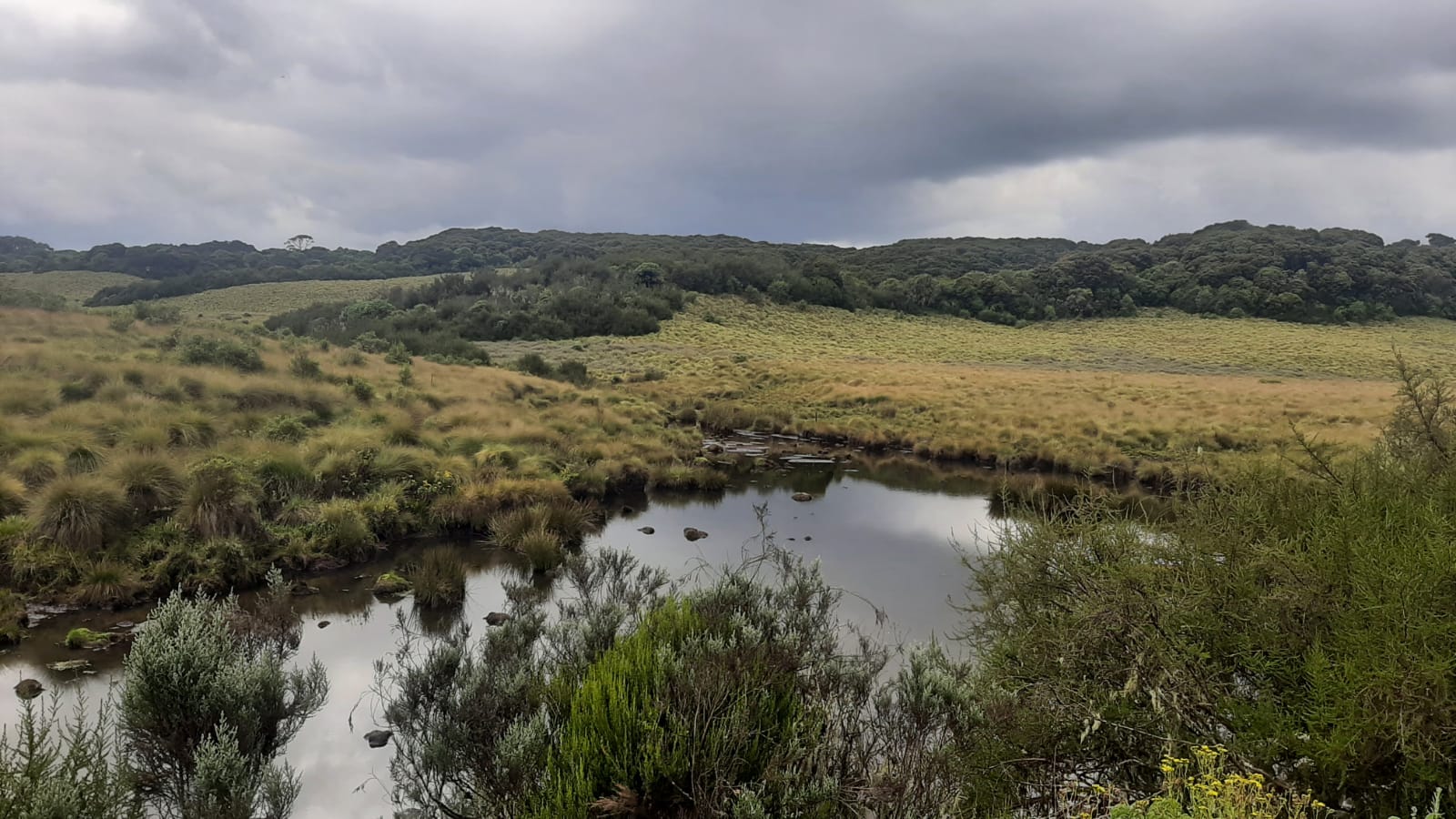Alternative road set to save Aberdare, spur economic growth
Environmental groups are calling on the government to consider an alternative road for a 9.8 per cent section of the over 500-kilometer Mau Mau road that traverses through the delicate ecosystem of Abadere National Park.
They highlighted studies indicating that the 32 Kilometer Kariamu- Ndunyu Njeru road offers a shorter route, at the edge of the park compared to the proposed 49-kilometer Ihithe-Ndunyu Njeru road, which would cut right in the middle of the biodiversity hotspot and critical water sources threatening the mountain forest ecosystem.
Additionally, they cited that the alternative route will provide greater socio-economic, environmental, and accessibility benefits to a larger population.
According to Dr. Dominic Walubengo, Chairman, National Environment Civil Society Alliance of Kenya (NECSA-K), the government should prioritize enhancing the existing Nyeri-Ndaragwa-Nyahururu-Ol Kalou-Miharati-Ndunyu Njeru route to category A status and consider dualization.
Dr. Walubengo in addition says that the proposed Mau Mau Road section cutting through the Aberdare National Park Ecosystem lacks economic viability because of the restricted operating hours and lower speed limits within National Parks that present significant hurdles to the goal of the road project – to spur economic growth and connectivity.
“Considering that the road would traverse the park, it would only be accessible during daylight hours, from 6:00 a.m. to 6:00 p.m. As we strive towards a 24-hour economy, confining connectivity to just 12 hours seems counterproductive and contradictory to our goal of achieving a sustainable 24-hour economy and optimal connectivity as a country,” he says.
Civil society groups argue that the Kariamu-Ndunyu Njeru alternative remains the optimal choice compared to the proposed Ihithe-Aberdare Forest-Kahuruko-Ndunyu Njeru Road, which would cut through a closed canopy forest in the crucial water tower.

Walubengo noted that not only will the alternative route stimulate economic hotspots across various regions, but it will also enhance connectivity between Nyeri and Nakuru, benefiting numerous communities along the route.
Rhino Ark Kenya Charitable Trust Executive Director, Christian Lambrechts, on his part, is urging the government to consider the alternative route because it will not interfere with wildlife as it lies outside the Aberdare Electric Fence and is also shorter to connect to Nyeri and Ol Kalou, the two headquarters of Nyeri and Nyandarua Counties.
“Ultimately, it will be far less expensive, Ksh 1.5 billion for the alternative road which has greater socio-economic, environmental, and accessibility benefits for a larger population versus Ksh 4.4 billion for the proposed Mau Mau road,” he avers.
The ED in finality is urging the government to consider this alternative road that is better for the environment, the people, and the Treasury.
Meanwhile, Paul Macharia, Vice Chair of Kamukuji Market in Nyeri Town, speaking to KBC Digital says that although he wants the proposed road to commence because it would open up the town economically to trade with Nyadarua County, he noted that the government should ensure that the ecosystem is minimally disturbed during construction.

“The government should make sure that this water catchment is preserved by ensuring that the expansion of the road is not too wide to avoid felling many trees. Fencing should also be prioritized to avoid human-wildlife conflict along the route as well as avoid accidents involving wild animals,” he says.
Asking him about the additional costs of fencing, Macharia says that it is the prerogative of the government to make sure that the country develops economically without causing harm to the existing environment.
The road construction is in limbo due to the delicate balance between environmental conservation and sustainable development.
While communities directly benefiting from the road recognize its importance for economic development, they also acknowledge that the preservation of the Aberdare National Park is vital for the local economy and its very existence.
One might question the magnitude of the threat to the unique Aberdares Forest in comparison to the economic benefits it offers.
Bulldozers will fell a large number of indigenous trees to pave the way for the proposed upgrade.
An Environmental and Social Impact Assessment report shows that around 104 hectares (256.9892 acres) of vegetation are lying in areas that will potentially be cleared. Out of this, 75 hectares (185.32875 acres) of bamboo, 14 hectares of forest (34.5947 acres) and 14 hectares (34.5947 acres) of moorland will potentially be destroyed.

In addition, the proposed upgrade of a road that cuts through Aberdare Forest will not have any economic value, a new study has shown.
The 49 Ihithe-Aberdare Forest-Kahuruko-Ndunyu Njeru road will be upgraded from earth to all-weather by the Kenya National Highways Authority (KeNHA)for Ksh 4.4 billion as opposed to Ksh 1.5 billion for the alternative shorter road by 17 Kilometers at the edge of the protected area which has greater socio-economic, environmental, and accessibility benefits for a larger population.
Conservation researchers from the universities of Nairobi, Oxford and Amsterdam have also concluded a Socio-economic Effects Analysis Study that shows that the upgrade is not necessary.
“Our analysis demonstrates that the new Mau Mau road (scenario 2) will reduce travel times by 1.3-6.5 per cent on 11 routes, and increase the number of people within 2km of a tarmac road by 177,000,” they said.
However, they said, the study shows there is almost no socio-economic benefit to building a road over the Aberdare Range through the Aberdare National Park.
“There is no evidence that it brings people closer to main roads, or reduces travel time to markets,” they said.
The Aberdare National Park has 63 endemic plants, an important bird area, large families of endangered African elephants, the largest remaining population of critically endangered Eastern Mountain Bongo and a small population of endangered black rhino.
It is also one of five water towers providing water to Kenya’s capital Nairobi and also feeds Lake Naivasha, the backbone of Kenya’s horticulture industry.
By Beth Nyaga









Post a Comment